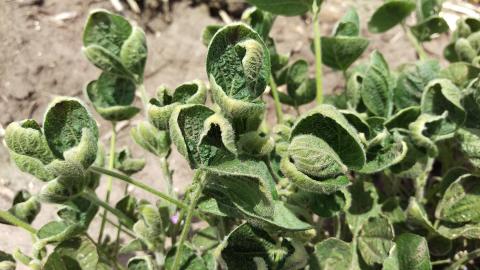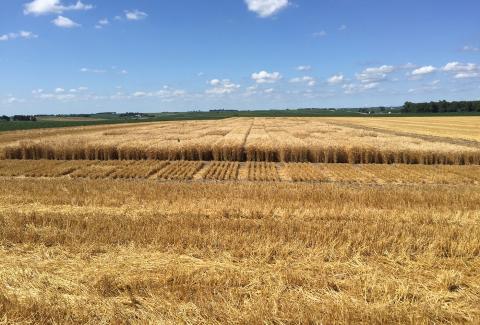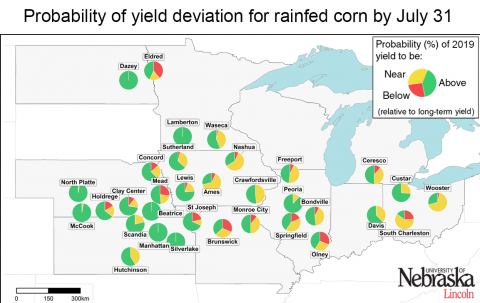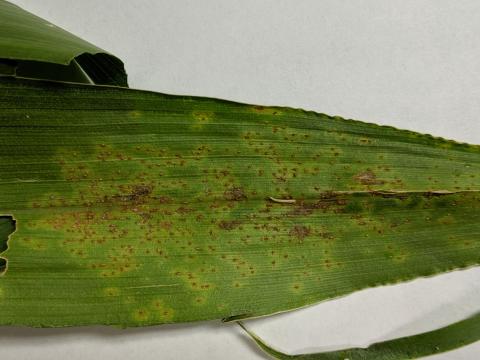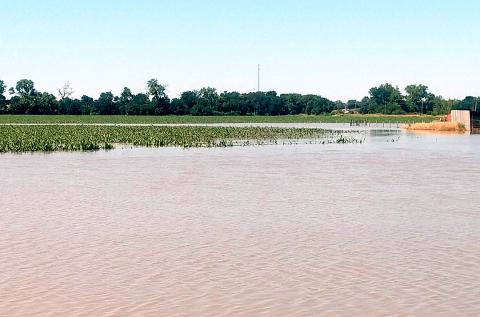Dicamba Off-Target Injury Continues in 2019 in Nebraska
August 16, 2019
As the crop season progresses, questions about dicamba off-target injury in soybean, broadleaf crops, and trees are increasing in Nebraska. If you suspect off-target injury in one of your fields, here's a reminder of what to do.
A Review of the 2018-19 Eastern Nebraska Winter Wheat Growing Season
August 15, 2019
Nebraska Extension educators review the wheat production season in eastern Nebraska and factors affecting it, from a rough start with cool, wet conditions to a good finish.
2019 Corn Yield Forecasts as of July 31
August 2, 2019
This article summarizes the simulated crop stages and yield forecasts performed on July 31 for 37 locations across the US Corn Belt.
Southern Rust of Corn Confirmed in Southeast Nebraska
July 16, 2020
Southern corn rust was confirmed on corn leaf samples from Fillmore, Nuckolls and Johnson counties in southern Nebraska this week. Warm, humid conditions may favor disease development, so fields in this area should be monitored frequently in the coming weeks.
2019 Corn Yield Forecasts as of July 15
July 19, 2019
Corn is still in vegetative stages across much of the Corn Belt. At this point, delayed planting doesn't appear to have affected yields at irrigated sites. Yields for rainfed sites vary considerably, with those on the western edge trending above normal.
How Extended High Heat Disrupts Corn Pollination
July 19, 2019
A lot of factors can affect corn pollination success, including recent and predicted high heat and high humidity. This explains how environmental conditions influence the pollination process and how a cool down later this weekend may be helpful.
Crop Impacts and Options After Mid-season Flooding
July 2, 2024
After heavy summer rains have led to flooding in Nebraska, many farmers are facing concerns about how long crops can survive in standing water and implications for the remainder of the growing season.
2019 Corn Yield Forecasts: Approach and Interpretation of Results
July 8, 2019
Agronomists address how the Corn Yield Forecast Center develops yield forecasts, what to expect during the growing season, and how to use the forecasts to inform farm decisions. Tables detailing soil types and crop management for each of the 41 locations are included.

